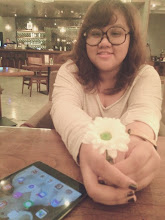 |
| Source: Google Images |
Background
The P5+1 (U.S,
China, U.K, France, Russia, plus Germany) and Iran took an important first step
toward reaching a long-term diplomatic resolution with the Joint Plan of Action
(JPOA), which halted the progress of Iran’s nuclear program in November 2013. The Iran’s nuclear
program was first uncovered in 2002 and since then the U.S. and its allies
(mainly EU) has been struggle to put pressure on the Islamic Republic even though
the concerned party stressed that it was developing nuclear for peaceful
purposes. The sanctions given by the EU
and U.S are not enough to stop the program, but it is enough to bring Iran to
the table of compromise. (Van
Kemenade, 2009)
Despite
the "significant progress" of the talks, several delays have been
made through the first step to this time.
As after the first talk the deadline of July 2014 was set to find a
"comprehensive solution", but the talks were subsequently extended by
four months to give negotiators more time. On that date, however, negotiators
announced that they need more time and extended the talk until November 24.
Since the extension, the P5+1 and Iran have meet multiple times in variety of
formats including the one in Oman involving Ashton Zarif and U.S Secretary of
State John Kerry where both sides agreed that another seven months were needed.
The process to reach the dreamed goal of a long-term diplomatic
resolution is not an easy matter as the parties has its own fear and distrust
issues towards each other. However, in the talk held from March 26 to
April 2 2015 in Lausanne, Switzerland resulted in high-level agreement on the
key parameters of a Joint Comprehensive Plan of Action (JCPOA). The JCPOA parties will continue drafting the
final text of JCPOA, to be agreed by 30 June 2015.
Once
the final text of JCPOA is done, Iran is obliged to abides by its commitments
if its want the U.S. and EU to lift their sanctions. Therefore, this article will attempt to explain
about the key Parameters of JPCOA regarding the Iran’s nuclear program and its
influence on the relation between the west and Iran.
Why
the West Started to Doubt Iran Nuclear Program?
It
was Alireza Jafarzadeh, U.S. representative for the exiled Iranian opposition
group, National Council of Resistance of Iran (NICRI), who in 2002 blow the
whistle on the much larger than known scale of Iran’s nuclear program. In a book published in 2007, he also
revealed that there has been a military component from the very beginning which
was separated from the Atomic Energy Organization of Iran (AEOI) and became the
exclusive reserve of the Revolutionary Guards, the state within the state that
was determined to keep this secret from the outside world. He also mentioned
that there are two top-secret nuclear sites under construction: a partly
underground uranium enrichment facility in Natanz and a heavy water facility in
Arak. (Jafarzadeh, 2007)
Those
NICRI reports what makes the U.S. and EU-3; United Kingdom, France and Germany,
to call on Iran to allow International Atomic Energy Agency (IAEA) inspectors
to have access to all previously declared and publicized facilities.
The
West Sanctions over the Iran Nuclear Program
Since
the secret nuclear program was revealed in 2002, the U.S. and EU have imposed
sanctions in efforts to prevent Iran from
developing military nuclear capability. The sanctions are targeted towards Iran’s key energy and financial
sectors and proven to be effective in crippling the Iran’s economy.
EU’s sanctions includes the restriction on trade equipment that can be
used for uranium enrichment, a ban on any transactions with Iran bank and
financial institution, and ban on the import, purchase and transport of Iranian crude oil
and natural gas - the EU had previously accounted for 20% of Iran's oil exports. European companies were also stopped from insuring Iranian oil
shipments.
The US sanctions
prohibit almost all trade with Iran, making some exceptions only for activity
"intended to benefit the Iranian people", including the export of medical and agricultural equipment,
humanitarian assistance and trade in "informational" materials such
as films. (BBC, 2015)
The Key Parameter
of Joint Comprehensive Plan of Action
The JCPOA is the fruit that comes from the recent talks about
Iran nuclear program in Switzerland. The key parameter
has been released but it still subject for more negotiation. These key parameters are elements to form
the foundation upon which the final text of the JCPOA that will be written
between now and June 30, and reflect the significant progress that has been
made in discussions between the P5+1, the European Union, and Iran.
The
key parameter includes agreement about Enrichment, Inspections and
Transparency, Reactor and Reprocessing, Sanctions, and Phasing. From this JCPOA, Iran has agreed to reduce by approximately two-thirds its
installed centrifuges and it also agreed to implement the Additional Protocol
of the IAEA, providing the IAEA much greater access and information regarding
Iran's nuclear program, including both declared and undeclared facilities. If in the future Iran can abide its
commitments in this JCPOA, U.S. and EU will fully relief their sanctions. (CNN, 2015)
Conclusion
The fear and distrust between U.S.-EU towards
Iran nuclear program is understandable as the hidden project argued to be a
deadly weapon that will disrupt international security. This JCPOA that
hopefully will be finished on 30 June is a love letter that will end the
nuclear crisis, remove the suspicion towards Iran and restore its crippled
economy.
References
BBC. (2015, March). Iran Nuclear Crisis: What are the
sanctions? Retrieved June 27, 2015, from BBC:
http://www.bbc.com/news/world-middle-east-15983302
CNN. (2015, April 2). Parameter of the Iran Nuclear Deal .
Retrieved June 27, 2015, from CNN:
http://edition.cnn.com/2015/04/02/world/iran-nuclear-deal-parameters/index.html
Jafarzadeh, A. (2007). The Iran Threat: President Ahmadinejad and the Coming Nuclear Crisis. New York: Palgrave MacMillan.
Van Kemenade, W. (2009). Iran's Relation with China and the West: Cooperation and Confrontation in Asia. The Hague: Netherland Institutes of International Relations.





